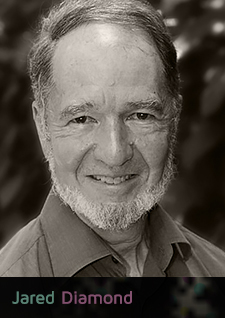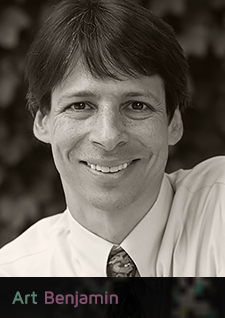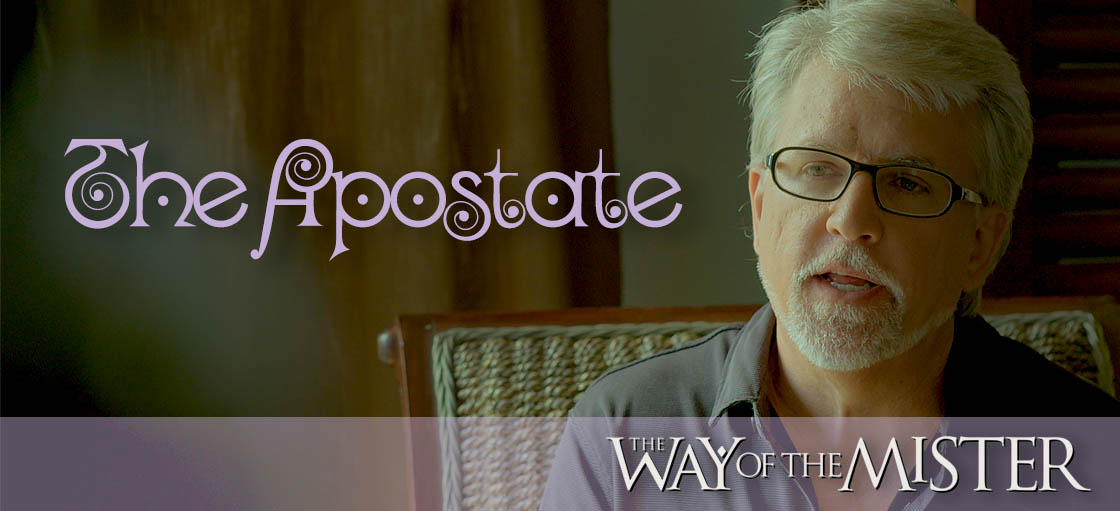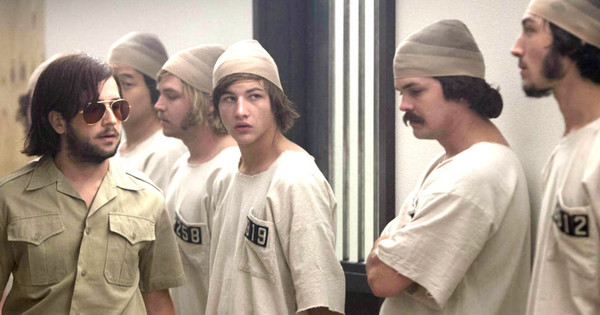
About this week’s eSkeptic
Are We All Potentially Evil? A new dramatic film based on the Stanford Prison Experiment reveals why good people turn bad. In this week’s eSkeptic, Michael Shermer discusses the film, the original experiment by Philip Zimbardo, and the triad of general principles behind evil posited by Zimbardo: the Person, the Situation, and the System.
This article was originally published on HuffingtonPost.com on July 27, 2015, and also on MoralArc.org today.
Dr. Michael Shermer is the Publisher of Skeptic magazine, a monthly columnist for Scientific American, a Presidential Fellow at Chapman University, and the author of The Moral Arc. His previous books include: The Believing Brain, Why People Believe Weird Things, Why Darwin Matters, The Mind of the Market, How We Believe, and The Science of Good and Evil.
Are We All Potentially Evil?
A new dramatic film based on the Stanford Prison Experiment reveals why good people turn bad
by Michael Shermer
The barbaric acts of ISIS in the Middle East and elsewhere (including lone wolf acts here and in Europe) have renewed the use of an adjective most commonly affiliated with Nazis—evil. In fact, British Prime Minister David Cameron evoked Hitler in his recent speech outlining a five year plan to combat Islamic extremism, starting with the acknowledgment that it is an ideology, and “Like so many ideologies that have existed before—whether fascist or communist—many people, especially young people, are being drawn to it. So we need to understand why it is proving so attractive.” Another way to say it is this: why do good people turn bad?
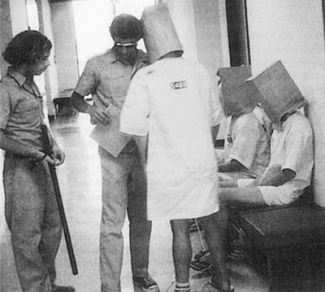
Anyone who has taken an introductory psychology course or has ever glanced at the scientific literature on the psychology of evil is familiar with Philip Zimbardo’s now-famous experiment conducted in a make-shift prison in the basement of the psychology building at Stanford University in August, 1971, in which the social psychologist randomly assigned 24 student volunteers to be either guards or prisoners. The experiment was to last two weeks but Zimbardo had to terminate it after six days when these intelligent and educated young men were transformed into cruel and sadistic guards or emotionally shattered prisoners. Not a formal experiment per se—with control and experimental groups for comparison—a flip of a coin to determine whether a student subject would be assigned to play guard or prisoner allows us to draw conclusions about the power of the situation to effect similar people dissimilarly.

Over the decades much has been written about the Stanford Prison Experiment (SPE), both in scholarly journals and in popular publications, and a number of documentaries have been made using archival footage shot by Zimbardo’s team. But now for the first time a major motion picture has been produced by IFC Films, directed by Kyle Patrick Alvarez and written by Tim Talbott, with script consultation by Zimbardo and based on the transcripts of the dialogue between guards and prisoners reprinted in his 2007 book The Lucifer Effect: Understanding How Good People Turn Evil. (Order the book from Amazon or Watch the lecture now, on Vimeo on Demand.) Unlike most filmic reenactments of real-life events in which considerable poetic license is taken to punch up the drama, none is needed for this film because the subjects themselves produced enough gravitas to keep the narrative arc moving toward its shattering conclusion. The tight-space cinematography well captures the claustrophobic nature of the faux basement prison, the editing and music pulls the audience into the prison cells and connecting hallway, and the coarse and profanity strewn dialogue (all real) shows the thin patina of civility covering the potential incivility that lies within even the most well-balanced psychologically healthy middle-class white college students (Zimbardo had them all tested for normalcy before the experiment began). If you, like most people (myself included) think “I would never do such a thing to another human being”, see this film and think again. The evidence from the SPE and research since indicates otherwise—the potential for evil is in all of us.

In this sense The Stanford Prison Experiment engages us on both emotional and intellectual levels to consider the nature of good and evil from a scientific perspective, In brief, as outlined in my 2015 book The Moral Arc, the dispositional theory holds that evil is the result of bad dispositions in some people (a few bad apples), whereas the situational theory holds that evil is the product of corrupting circumstances (bad barrels that corrupt apples). The dispositional theory of evil is the one most commonly embraced by religion (original sin), medicine (internal disease), psychiatry (mental illness), and the law (personal culpability), whereas the situational theory of evil is more conventionally invoked by social psychologists, sociologists, and anthropologists sensitive to the diversity and power of environments to shape human behavior.
In point of fact both of these theories contain an element of truth: by disposition we have the capacity for good and evil, with the behavioral expression of them dependent on the situation and whether we choose to act. That is, we all have the capacity to commit evil deeds, but the expression of such acts very much depends on circumstances and conditions. As Aleksandr Solzhenitsyn observed in The Gulag Archipelago:
If only there were evil people somewhere insidiously committing evil deeds, and it were necessary only to separate them from the rest of us and destroy them. But the line dividing good and evil cuts through the heart of every human being. And who is willing to destroy a piece of his own heart?
In my model of morality, our dual dispositional nature of good and evil arose from our evolutionary history as a social primate species practicing within-group amity and between-group enmity. In order to survive as individuals we must get along with our fellow in-group members, and this led to the evolution of such moral emotions as empathy, cooperation, and trust. These pro-social tendencies gave us a good disposition. But because of the very real threat that strangers posed in the environment of our evolutionary ancestry natural selection also shaped us to have such emotions as xenophobia, competitiveness, and violence. These anti-social tendencies gave us an evil disposition.
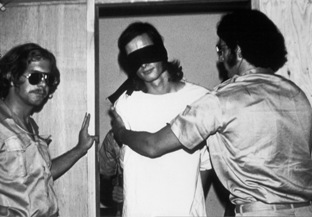
When I entered a graduate program in experimental psychology in the late 1970s Philip Zimbardo was already a legend. In an extensive interview I conducted with him in 2007 while researching my book The Mind of the Market (summarized here), Zimbardo explained how he became interested in this dark subject. Born in the south Bronx and raised in poverty by uneducated Sicilian parents, Zimbardo saw first hand the bleaker side of humanity, expressed when people find themselves in impoverished environments with unenforced laws and openly expressed distrust. As a young professor just recently hired by Stanford University, he returned to his old haunts to set up an experiment to see what would happen to an apparently abandoned vehicle left there, compared to one parked on the streets of the upscale neighborhood of Stanford’s Palo Alto. In the Bronx, the car started being stripped before the research team could finish setting up their hidden cameras. In only one day there were 23 assaults on the helpless automobile. In Palo Alto, by contrast, the car went untouched until Zimbardo finally gave up and drove it back to campus, at which time three neighbors called the police to report an abandoned car was being stolen. Such a striking difference cannot be the result of differential dispositions between New Yorkers and Californians. Quite obviously the difference was in the neighborhoods. What were those differences?

This is the question Zimbardo set out to answer in the basement of the Stanford psychology building. To add to the realism, the students assigned to be prisoners were arrested at home by members of the local Police Department, were brought to the prison in squad cars, then were sprayed for lice and forced to stand naked during orientation before they were finally given drab prison garb and crammed into 6-by-9 foot cells. For their part, the guards were given clubs, whistles, keys to the prison cells, and mirrored sunglasses (“an idea I got from the film Cool Hand Luke,” Zimbardo explained). Over the next couple of days these psychologically well-adjusted students were transformed into either the role of violent, authoritative guards or demoralized, impassive prisoners. The experiment was to last for two weeks. Zimbardo’s girlfriend at the time (now his wife of nearly 40 years), Christina Maslach, after seeing the guards abusing the prisoners during their late night toilet run—with bagged heads and chained ankles—insisted that Zimbardo end it before someone was seriously hurt (“She told me she wouldn’t marry me if I was the sort of person who would allow such a thing to happen” he recalled). At that moment he realized that he had become part of the experiment in the role of prison superintendent. “I called off the experiment not because of the horror I saw out there in the prison yard,” he explained in the technical write up of the experiment, “but because of the horror of realizing that I could have easily traded places with the most brutal guard or become the weakest prisoner full of hatred at being so powerless that I could not eat, sleep, or go to the toilet without permission of authorities.”
I asked Zimbardo how he views the experience decades later. “The message of my little Stanford Prison Experiment is that situations can have a more powerful influence over our behavior than most people appreciate and few people recognize,” he began. “Social psychologists like myself have been trying to correct the belief that most people hold that evil is located only in the disposition of the individual—in their genes, their brains, their essence—and that there are good apples and there are bad apples.” But, I rejoined, there are bad apples, no? Yes, of course, Zimbardo conceded the point, but the vast majority of evil in the world is not committed by those few bad apples; instead, it is ordinary people doing extraordinary things under certain circumstances. Zimbardo prefers to err on the side of granting people the benefit of the doubt. “Before we blame individuals, the charitable thing to do is to first find out what situations they were in that might have provoked this evil behavior. Why not assume that these are good apples in a bad barrel, rather than bad apples in a good barrel?”
How can we tell the difference between good and bad apples, and between good and bad barrels, I pressed? “When I launched my experiment at Stanford we knew these students were good apples because we gave them a battery of tests—personality tests, clinical interviews, we checked their background, etc., and every one of them was normal. Then we randomly assigned them to be guards or prisoners. So, on day one they were all good apples. Yet within days, the guards were transformed into sadistic thugs and the prisoners were emotionally broken.” Zimbardo’s bad barrel turned good apples rotten.

The Stanford Prison Experiment film stays in its time period and offers little in the way of deeper reflection on its meaning, but what pushed Zimbardo to finally write a deep analysis of what he discovered was the atrocities at Abu Ghraib that came to light in 2003. The shocking photographs reminded him of the SPE. “Believe me,” he told me, “what we have all seen on television is just the tip of the iceberg. The abuses were much worse than you can imagine when you see all of the uncensored photographs.” He shared some of these photographs with me and it’s true—these uncensored scenes almost beggar description. You wince when you see them. How could the people who did this not embody pure evil? It depends on what we mean by evil. Zimbardo defines it in The Lucifer Effect thusly: “Evil consists in intentionally behaving in ways that harm, abuse, demean, dehumanize, or destroy innocent others—or using one’s authority and systemic power to encourage or permit others to do so on your behalf.” More succinctly, and incorporating room for free will and moral culpability, evil is “knowing better but doing worse.”
When the Abu Ghraib story broke it wasn’t long before the media made the same connection to the Stanford Prison Experiment that its Principle Investigator had, and Zimbardo soon found himself on NPR and other media outlets to discuss the similarities. Shortly thereafter he was contacted by one of the attorneys representing Staff Sergeant Ivan “Chip” Frederick, the military policeman in charge of the night shift on Tiers 1A and 1B, the most abusive cellblocks in that most abusive of Iraqi prisons. Without denying Frederick’s culpability in the Abu Ghraib abuses (Frederick admitted his own guilt), Zimbardo wanted to go deeper to explore the environment that enabled the torture, abuse, and humiliation of the prisoners there. Zimbardo did not so much defend Frederick as implicate the chain of command above Frederick with complicity in the crime. Zimbardo agreed that Frederick should have been punished for his actions, but the punishment should fit the crime and we should hold accountable Frederick’s superiors who enabled or even encouraged such abuses. Instead, those who fashioned the environment in which Frederick acted walked free while Frederick was given an eight-year sentence at Fort Leavenworth (he was released after four years).
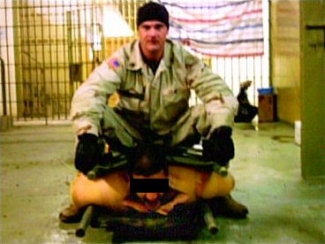
Research psychologists typically employ what is known as an A-B-A experimental protocol, that is, pre-test—test—post-test. Pre- and post-test comparisons with the behaviors during the test allow us to tease out causal variables. In this model, Zimbardo told me that before he went to Iraq, Chip Frederick was an all-American patriot, “a regular church-going kind of guy who raises the American flag in front of his home each day, gets goose bumps and tears up when he listens to our National Anthem, believes in American values of democracy and freedom, and joined the army to defend those values.” Frederick, in fact, was a model soldier, earning numerous awards, including the Army Achievement Medal three times, the Army Reserve Components Medal four times, the National Defense Medal twice, the Armed Forces Reserve Medal, the Army Service Ribbon, the Global War on Terrorism Medal, and others. He was about to receive a coveted Bronze Star when the Abu Ghraib abuse story broke. After the story broke about the abuses at Abu Ghraib, Zimbardo arranged for a military clinical psychologist to conduct a full psychological assessment of Frederick through a battery of tests, as well as bringing Frederick and his wife, Martha, to San Francisco in order to better know the person behind the MP uniform.
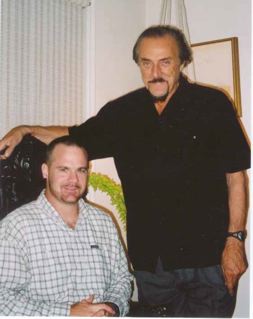
The psychological assessments of Frederick indicated that he was by all counts a perfectly normal guy, average in intelligence, average in personality, with “no sadistic or pathological tendencies,” and with only one outlier trait: “Validity scales indicate the patient presented himself as a morally virtuous individual.” To Zimbardo, these results “strongly suggest that the ‘bad apple’ dispositional attribution of blame made against him by military and administration apologists has no basis in fact.” After he was convicted Frederick penned a letter to Zimbardo from prison in which he confessed (in The Lucifer Effect): “I am proud to say that I served most of my adult life for my country. I was very prepared to die for my country, my family and friends. I wanted to be the one to make a difference.”
In the A-B-A model, before Abu Ghraib Chip Frederick was normal. At Abu Ghraib he was abnormal. After Abu Ghraib he was once again normal. What does this tell us? “There is absolutely nothing in his record that I was able to uncover that would predict that Chip Frederick would engage in any form of abusive, sadistic behavior,” Zimbardo concluded. “On the contrary, there is much in his record to suggest that had he not been forced to work and live in such an abnormal situation, he might have been the military’s All-American poster soldier on its recruitment ads.”
Pulling back from this specific case to the general principles behind evil, Zimbardo posits a triad of factors—the Person, the Situation, and the System—and how together and in interaction with one another they can lead a good person to perform evil acts. Here we see an integration of the dispositional theory of evil (the Person), the situational theory of evil (the Situation), and a third component Zimbardo only added after his investigation of Abu Ghraib—the larger context in which the person and situation co-exist (the System). “When I was reading the reports about Abu Ghraib I wanted to know who creates these situations that enables evil?” he recalled in our interview. “The system is the bigger barrel: legal, economic, historical, political forces that gives these situations legitimacy. And most systems have a shield so that there is no transparency. Top politicians like Bush and Cheney have to cater to particular voters and donors, and those voters and donors will be part of a political or religious or corporate system that enables them to say, in essence, if you want our votes or our dollars, you have to go along with what we believe.”
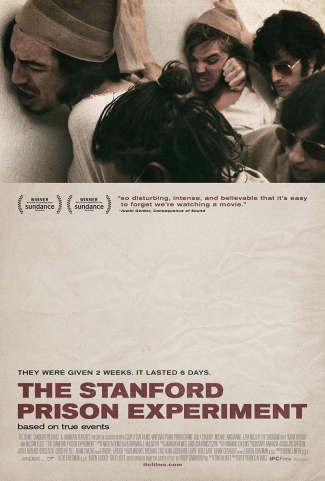
Wait, I wonder aloud. Does this mean that everyone from George W. Bush and Dick Cheney at the top to Chip Frederick and Lynndie England at the bottom are absolved of responsibility? Does explanation equal exoneration? Sensing my unease at the implications of where all this science leads, Zimbardo quickly rejoined: “What happened at Abu Ghraib was inexcusable, but it was not inexplicable. I cannot repeat this caveat enough: to explain something is not to excuse it.” He recalled an incident in Washington D.C. when he was testifying in another matter when he was accused of being an “excuseologist.” The label stung. “We’re not excusing anything. We’re scientists who, like all scientists, want to understand the cause of things, in this case evil behavior.”
Watching The Stanford Prison Experiment film you will be tempted—as I was—to moralize about the accursed guards and sympathize with the guiltless prisoners. Such is the power of a good film. But after your moral emotions subside think like a scientist and consider why good people turn bad, and what we can all do to prevent future evils. ![]()



